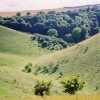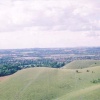Please login or click here to join.
Forgot Password? Click Here to reset pasword
 |  |  |  |  |  |
| Darrell Evans Posts: 11 Joined: 11th Sep 2018 Location: UK | quotePosted at 19:14 on 12th September 2018 I keep toying with the idea of getting a mirrorless camera for a second body. The upcoming XT3 is on the radar. My question is to mirrorless users. Do you find that the sensor gets more dust on it compared to a conventional DSLR? |
| Edward Lever Posts: 734 Joined: 22nd Dec 2005 Location: UK | quotePosted at 21:02 on 12th September 2018 I am not a mirrorless user, but I suspect it will be hard to find anyone who uses both a mirrorless camera and a DSLR side-by-side under identical conditions, let alone someone who can give you a quantitative answer. Common sense would lead me to believe the same amount of dust will enter both types of camera during lens changes, the only difference being that with the mirrorless camera it will fall directly onto the sensor, rather than mainly onto the mirror of the conventional DSLR. However, over time, any dust falling on the mirror of the conventional DSLR will get thrown off into the inside of the camera, and some of the dust will ultimately settle on the sensor. So in the long term, there is probably little difference in the dust susceptibility of both types of camera. More important is the question of whether the sensor has ultrasonic cleaning, since this is a great help in shifting dust off the sensor, whether mirrorless or DSLR. Common sense also indicates that keeping lens changes to a minimum and avoiding dusty conditions is also an important factor in keeping the sensor clean in both cases.
Edited by: Edward Lever at:12th September 2018 21:33 |
| Darrell Evans Posts: 11 Joined: 11th Sep 2018 Location: UK | quotePosted at 17:15 on 13th September 2018 I would hope that your reasoning is true. I have a Fujifilm x100t and love the little camera but it is a fixed lens system. This is not a problem with this camera as it was bought as a walk around camera and I did not wat to carry anything else to support it. The reason I ask the question is that with the sensor open to view does it lead to more cleaning or as you say it is about the same. Another thing that alarmed me was when watching a YouTube video of the launch of the A7iii (think it was this model) and one of the reviewers accidently dropped an earphone bud in the opening and it wrote the senor off. Silly and unusual accident but these things happen. |
| Edward Lever Posts: 734 Joined: 22nd Dec 2005 Location: UK | quotePosted at 18:48 on 13th September 2018 Even cameras with a fixed lens can get dust on the sensor, via poor sealing of the lens. Fortunately it is rarely a problem, but since this type of camera cannot be disassembled for cleaning, it is a specialist repair job if dust does get inside. Any camera with a removable lens, whether mirrorless or conventional DSLR, is obviously extremely vulnerable to dust and other damage with the lens mount uncovered. My advice is to keep the time for which the camera is in this state to an absolute minimum and keep the camera upright, so that the sensor surface is vertical. Cameras are precision instruments and should be treated with utmost care to preserve your precious investment. It is also possible to get dust drawn into a camera via the lens. Some zoom lenses are notorious for sucking in dust as they zoom and this will get onto the sensor of whatever type of camera is used. Professional lenses should suffer less of this problem since the sealing is usually far better than on entry-level lenses.
|
| Rod Burkey Posts: 554 Joined: 2nd Sep 2008 Location: UK | quotePosted at 16:44 on 15th September 2018 As Edward has said, removing the lens always brings with it a risk of dust entering the camera body and reaching the sensor. There are kits available to remove dust. |
| Darrell Evans Posts: 11 Joined: 11th Sep 2018 Location: UK | quotePosted at 17:29 on 15th September 2018 Thanks Rod. I was just intrested to know if dust is a bigger proble with mirrorless as I hate cleaning the sensor. I could send it it for cleaning but it is expensive for a full frame. As for cleaning kit I have never liked wet kits and now only use a blower and an Eyelead Sensor Dust-Sticking Bar. These are great in my opinion and a lot less hassle, there a different versions for the DSLR and mirorless. |
| Edward Lever Posts: 734 Joined: 22nd Dec 2005 Location: UK | quotePosted at 18:22 on 16th September 2018 I am wary of any cleaning process which involves physical contact with the sensor surface. Maybe I have been lucky, but I have never needed to use anything more than a Giotto Rocket Blower to remove debris. If the amount of dust requires a wet cleaning kit, then it is worth reviewing the camera usage and frequency of lens changes. A camera used professionally might well acquire more dust than a lightly-used amateur camera. |
| Edward Lever Posts: 734 Joined: 22nd Dec 2005 Location: UK | quotePosted at 21:01 on 16th November 2018 The Canon EOS R mirrorless camera incorporates a system which minimises the risk of dust getting on the sensor during lens changes. It achieves this by closing the shutter when the camera is powered off, thus protecting the sensor surface. As far as I am aware, Canon is the only maker who has adopted this system for a mirrorless camera. |
| Darrell Evans Posts: 11 Joined: 11th Sep 2018 Location: UK | quotePosted at 09:10 on 25th November 2018 To me that seems to be a good logical way to protect the sensor so why is it only Canon doing this? |
| Edward Lever Posts: 734 Joined: 22nd Dec 2005 Location: UK | quotePosted at 13:03 on 25th November 2018 Good question, Darrell. The EOS R is Canon's first full-frame mirrorless camera, and has only just been released after a long period in development. I imagine a lot of thought went into its design, including practical details such as the problem of dust when changing lenses. |